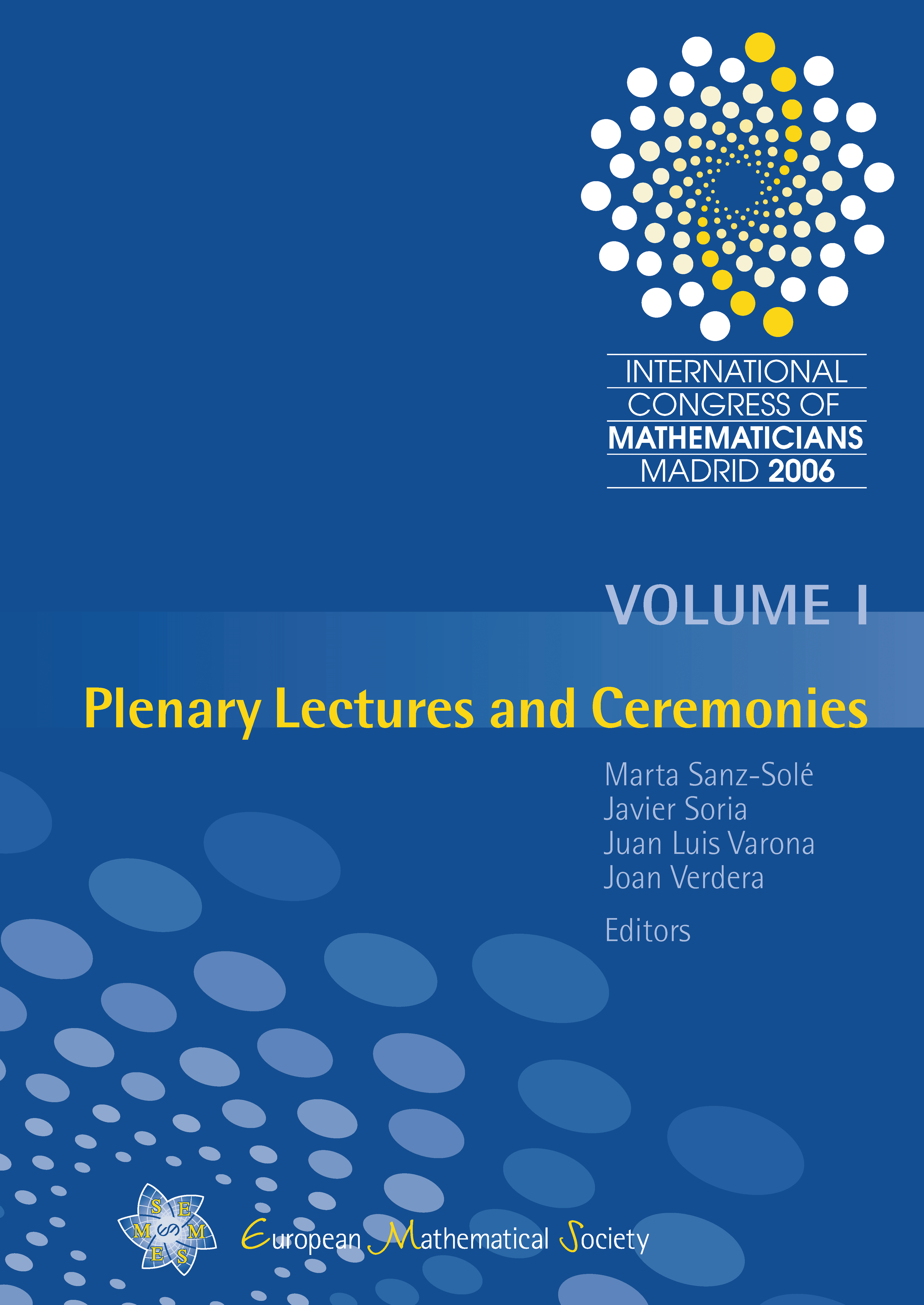The work of Wendelin Werner
Charles M. Newman
New York University, USA

A subscription is required to access this book chapter.
Abstract
It is my great pleasure to briefly report on some of Wendelin Werner’s research accomplishments that have led to his being awarded a Fields Medal at this International Congress of Mathematicians of 2006. There are a number of aspects of Werner’s work that add to my pleasure in this event. One is that he was trained as a probabilist, receiving his Ph.D. in 1993 under the supervision of Jean-François Le Gall in Paris with a dissertation concerning planar Brownian Motion – which, as we shall see, plays a major role in his later work as well. Until now, Probability Theory had not been represented among Fields Medals and so I am enormously pleased to be here to witness a change in that history.
I myself was originally trained, not in Probability Theory, but in Mathematical Physics. Werner’s work, together with his collaborators such as Greg Lawler, Oded Schramm and Stas Smirnov, involves applications of Probablity and Conformal Mapping Theory to fundamental issues in Statistical Physics, as we shall discuss. A second source of pleasure is my belief that this, together with other work of recent years, represents a watershed in the interaction between Mathematics and Physics generally. Namely, mathematicians such as Werner are not only providing rigorous proofs of already existing claims in the Physics literature, but beyond that are providing quite new conceptual understanding of basic phenomena – in this case, a direct geometric picture of the intrinsically random structure of physical systems at their critical points (at least in two dimensions). One simple but important example is percolation – see Figure 1.
Permit me a somewhat more personal remark as director of the Courant Institute for the past four years. We have a scientific viewpoint, as did our predecessor institute in Göttingen – namely, that an important goal should be the elimination of artificial distinctions between the Mathematical Sciences and their applications in other Sciences – I believe Wendelin Werner’s work brilliantly lives up to that philosophy.
Yet a third source of pleasure concerns the collaborative nature of much of Werner’s work. Beautiful and productive mathematics can be the result of many different personal workstyles. But the highly interactive style, of which Werner, together with Lawler, Schramm and his other collaborators, is a leading exemplar, appeals to many of us as simultaneously good for the soul while leading to work stronger than the sum of its parts. It is a promising sign to see Fields Medals awarded for this style of work.